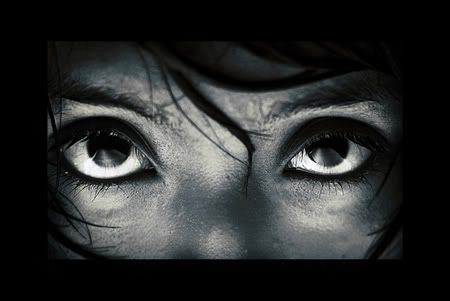| Cornea | front part of the tough outer coat, the sclera. It is convex and transparent. | Protects front of eye and bends light to form an image on the retina. |
| Conjunctiva | membrane covering the exposed front part of the eye, and lining the eyelids. It is kept moist by antiseptic secretions from the tear glands. | Protects the cornea |
| Sclera | The opaque 'white of the eye' - also called the sclerotic. A tough and fibrous outer layer covering whole of eye except cornea. | Protection |
| Iris | Pigmented (decides the colour of your eyes) so light cannot pass through. Its muscles contract and relax to alter the size of its central hole or pupil | Protects the photoreceptors in the retina from being damaged by too much light |
| Pupil | A black hole in the centre of the iris. It is the dark pigmented layer inside the eye - the choroid - which makes the pupil appear black. | Allows light to enter eye |
| Lens | Transparent, bi-convex, flexible disc behind the iris attached by the suspensory ligaments to the ciliary muscles | Brings the light entering through the pupil to a focus on the retina.
|
| Ciliary muscle | Ring of muscle fibres around lens | Controls lens thickness and curvature |
| Suspensory ligaments | Ligament between lens and ciliary muscle | Supports lens and connects it to the ciliary muscle |
| Retina | The lining of the back of eye containing two types of photoreceptor cells - rods (sensitive to dim light and black and white) and cones (sensitive to colour). A small area called the fovea in the middle of the retina has many more cones than rods. | Screen on which images are formed as a result of light being focused onto it by the cornea and lens. The fovea is the point of maximum visual sharpness. |
| Optic nerve | Bundle of sensory neurones at back of eye. | Carries signals from the photoreceptors of the retina to the brain. At the point where the sensory neurones leave the retina to form the optic nerve - the so-called 'blind spot' - there are no rods and cones, and no image can therefore be seen. |


